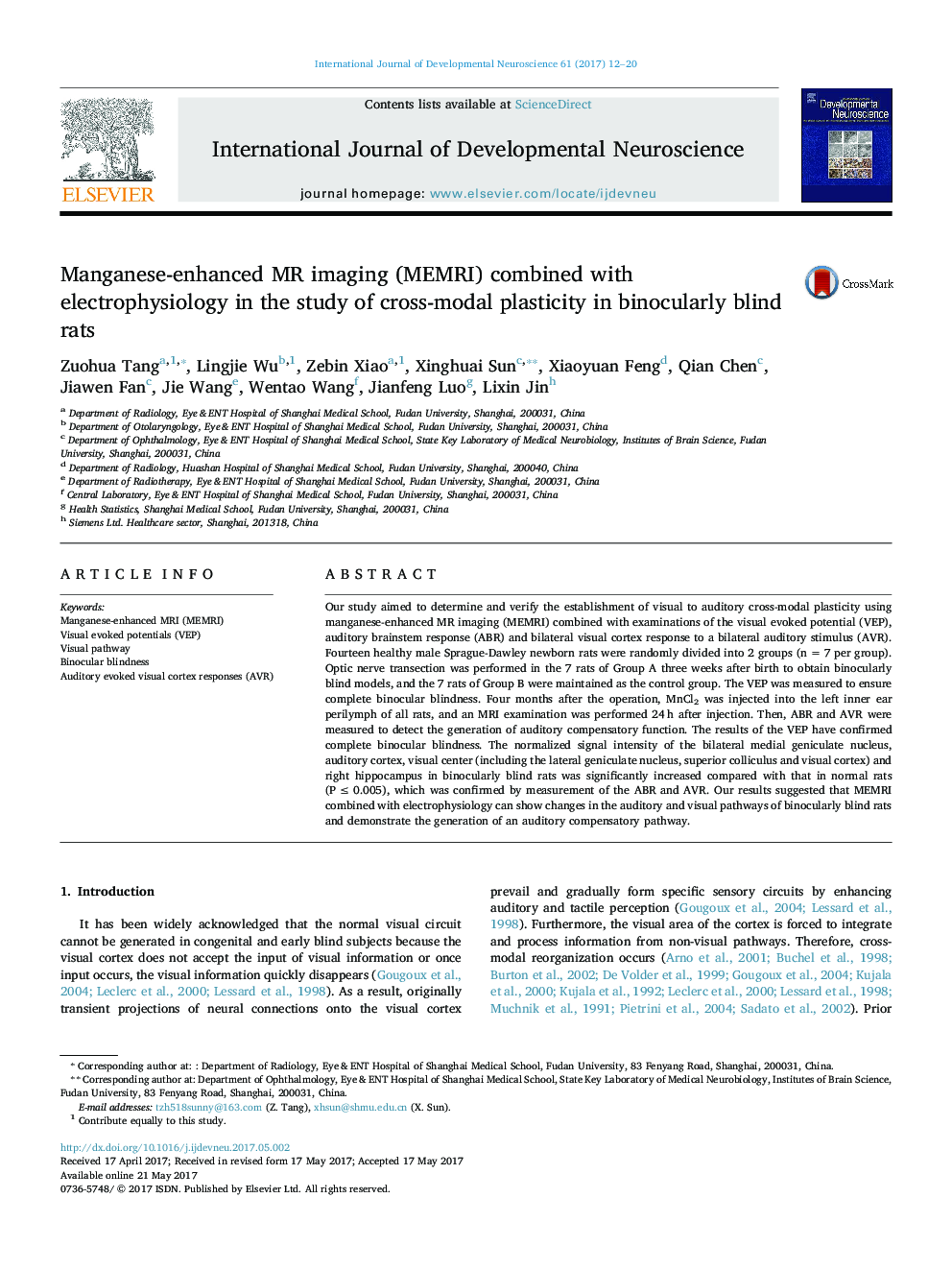| Article ID | Journal | Published Year | Pages | File Type |
|---|---|---|---|---|
| 5585738 | International Journal of Developmental Neuroscience | 2017 | 9 Pages |
Abstract
Our study aimed to determine and verify the establishment of visual to auditory cross-modal plasticity using manganese-enhanced MR imaging (MEMRI) combined with examinations of the visual evoked potential (VEP), auditory brainstem response (ABR) and bilateral visual cortex response to a bilateral auditory stimulus (AVR). Fourteen healthy male Sprague-Dawley newborn rats were randomly divided into 2 groups (n = 7 per group). Optic nerve transection was performed in the 7 rats of Group A three weeks after birth to obtain binocularly blind models, and the 7 rats of Group B were maintained as the control group. The VEP was measured to ensure complete binocular blindness. Four months after the operation, MnCl2 was injected into the left inner ear perilymph of all rats, and an MRI examination was performed 24 h after injection. Then, ABR and AVR were measured to detect the generation of auditory compensatory function. The results of the VEP have confirmed complete binocular blindness. The normalized signal intensity of the bilateral medial geniculate nucleus, auditory cortex, visual center (including the lateral geniculate nucleus, superior colliculus and visual cortex) and right hippocampus in binocularly blind rats was significantly increased compared with that in normal rats (P â¤Â 0.005), which was confirmed by measurement of the ABR and AVR. Our results suggested that MEMRI combined with electrophysiology can show changes in the auditory and visual pathways of binocularly blind rats and demonstrate the generation of an auditory compensatory pathway.
Related Topics
Life Sciences
Biochemistry, Genetics and Molecular Biology
Developmental Biology
Authors
Zuohua Tang, Lingjie Wu, Zebin Xiao, Xinghuai Sun, Xiaoyuan Feng, Qian Chen, Jiawen Fan, Jie Wang, Wentao Wang, Jianfeng Luo, Lixin Jin,
